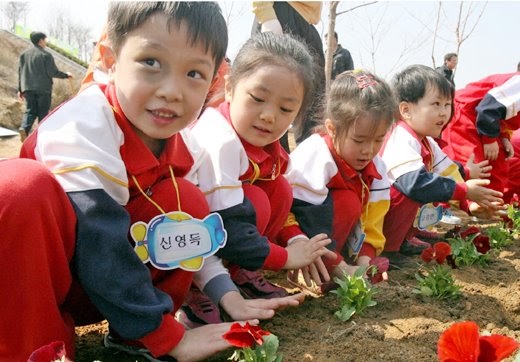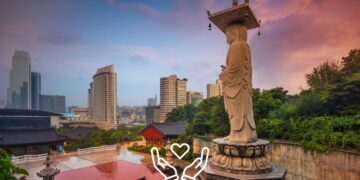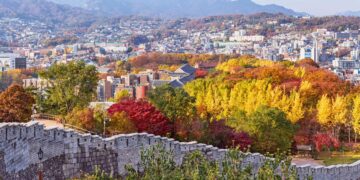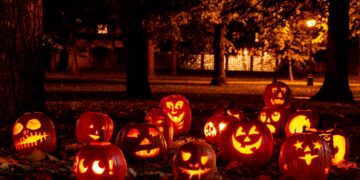Last Updated on 2 years by admin
Singmogil, Arbor Day in South Korea, heralds a time of renewal and environmental stewardship, inviting locals and visitors alike to participate in tree planting and appreciate the verdant splendor of nature. Across the nation, numerous sites, from lush national parks to tranquil arboretums, beckon with their unique celebrations and educational opportunities.
Singmogil: What It Is and How It Is Celebrated
In the heart of Korea’s vibrant culture and traditions lies Singmogil, a lesser-known yet profoundly meaningful celebration. Singmogil, which translates to “Tree Planting Day,” embodies the spirit of environmental conservation and the harmonious coexistence between humans and nature. This special day, marked annually on April 5, encourages individuals, communities, and organizations across South Korea to plant trees, fostering a greener environment and contributing to the global fight against climate change.

Tree planting on Singmogil in South Korea is deeply ingrained cultural practice that symbolizes growth, prosperity, and sustainability. By planting trees, Koreans contribute to beautifying their surroundings and play a crucial role in preserving biodiversity, enhancing air quality, and combating global warming. Singmogil serves as a reminder of the importance of trees in our lives, providing oxygen, shade, and habitats for countless species.
On Singmogil, schools, corporations, and local governments organize tree-planting events, drawing participants from all walks of life. These events often begin with educational sessions about the importance of trees and the correct methods of planting and caring for them. Volunteers then plant saplings in designated areas, including parks, school grounds, and mountainsides. The day is not only about planting trees but also about strengthening community bonds and promoting a sense of collective responsibility towards the environment.
Places to Visit Related to Singmogil
For those interested in experiencing Singmogil firsthand or exploring related sites, here are some notable locations in South Korea:
1. Jongmyo Shrine
A UNESCO World Heritage site in Seoul, this historic shrine is surrounded by beautiful, serene gardens. While not specifically for Singmogil, its lush landscapes reflect the Korean appreciation for nature and greenery.
2. Hallasan National Park
Located on Jeju Island, Hallasan is one of the best National Parks in South Korea. Moreover, it is perfect for connecting with nature. The park offers a variety of trails, ranging from easy walks to challenging hikes, each surrounded by diverse vegetation and spectacular scenery.
Read also: How to Cope with the Danger of Ramen Broth Pollution at Hallasan National Park
3. RM Forest
Dedicated to BTS leader RM, this forest is part of an initiative by fans to celebrate his birthday while contributing to the environment. Situated along the Han River in Seoul, it proves the impact of K-pop culture in promoting environmental awareness. Visitors can enjoy a tranquil escape in the city while admiring the beauty of the trees planted in RM’s honor.
4. Suncheon Bay National Garden
This expansive garden in Suncheon offers a breathtaking array of plant life and themed gardens. It’s a living showcase of Korea’s commitment to green spaces and environmental preservation, making it a perfect destination for those celebrating Singmogil.
5. Olympic Park Forest
Born from the 1988 Seoul Olympic Games, this park features many trees and plants, making it an ideal spot for tree lovers. It symbolizes peace and harmony, reflecting the Olympic spirit and the essence of Singmogil.
6. Jirisan National Park
As one of the largest national parks in South Korea, Jirisan spans three provinces and offers lush, verdant landscapes filled with ancient trees, making it an ideal location for Arbor Day activities. The park’s diverse ecosystems and scenic hiking trails provide a perfect backdrop for appreciating the importance of forest conservation.Moreover, the national park’s popularity has surged due to the Korean drama ‘Jirisan.’
7. Seoul Forest
Located in the heart of Seoul, Seoul Forest is an urban oasis that combines nature with art and recreation. With its eco-forest, butterfly garden, and deer park, Seoul Forest offers a variety of natural attractions. It’s a place where visitors can participate in tree-planting events and learn about urban forestry practices.
Remember to read this: Seoul Forest – All You Need To Know Before Your Visit
8. Odaesan National Park
Famous for its ancient forests, Odaesan National Park is home to largest natural woodland in South Korea. The park’s dense forests of fir and hemlock trees are particularly striking during the spring and autumn. Odaesan provides an excellent opportunity for hiking, nature observation, and participating in tree-planting and environmental education programs.
From picturesque landscapes to hidden gems and cultural adventures, follow KoreaTravelPost’s Twitter, Facebook, Instagram, LinkedIn, and Flipboard for a thrilling journey through the heart of Korea.
Related Posts
5,885 total views, 5 views today

















